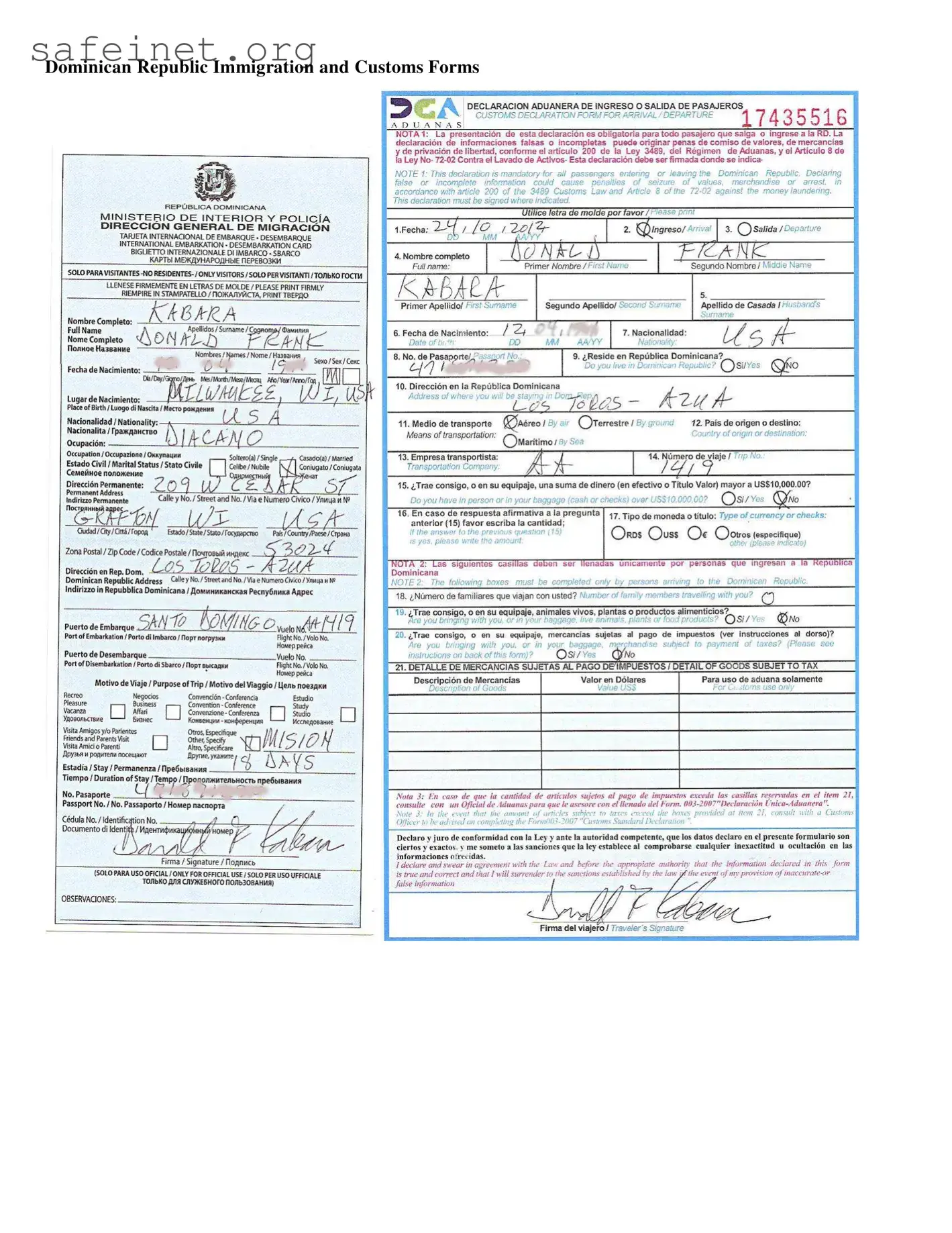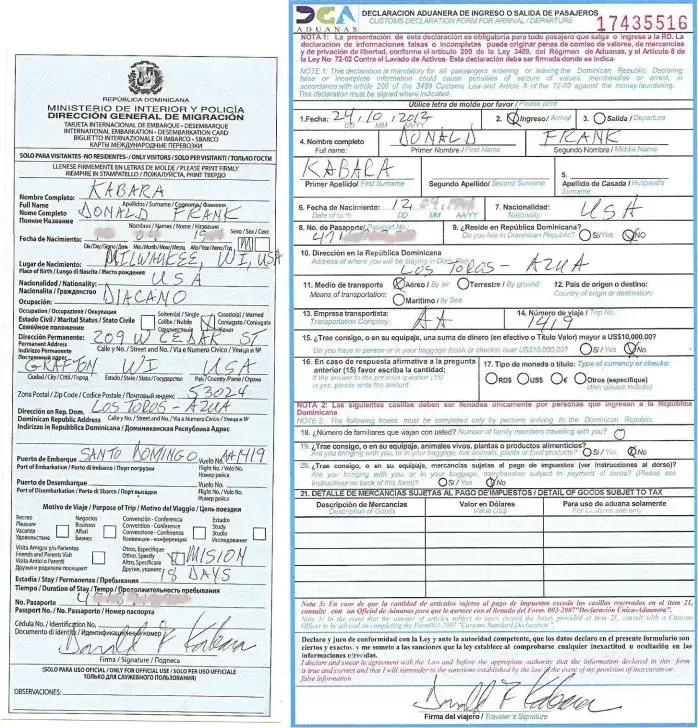What is the Dominican Republic Immigration form?
The Dominican Republic Immigration form is a required document for all passengers entering or leaving the country. It includes two main components: the Immigration and Customs Declaration Form. This form collects essential information about travelers, including their identity and purpose of visit, as well as any goods they may be bringing into or taking out of the Dominican Republic.
Is it mandatory to fill out the form?
Yes, completing the form is mandatory for all passengers. Both entering and departing travelers must submit the form. Failure to do so can lead to severe penalties, including the seizure of goods or even arrest for providing false information.
What happens if I provide false information?
Providing false or incomplete information on the Immigration form can result in significant legal consequences. According to the Customs Law and anti-money laundering laws, travelers may face penalties such as arrest, confiscation of merchandise, or fines.
How do I fill out the form correctly?
The form must be completed using block letters. Each section should be filled out completely and accurately. Ensure that personal details such as name, nationality, and passport number are filled in correctly. Take particular care when declaring any cash or valuables exceeding $10,000.
What do I need to declare on the form?
Travelers must declare any cash or its equivalent over $10,000, as well as any goods subject to taxes. Additionally, if you are carrying live animals, plants, or food products, that must be declared as well. Accurately detailing these items helps avoid potential legal issues upon arrival or departure.
Where can I obtain the form?
The Dominican Republic Immigration form is typically provided by airlines or can be found at immigration checkpoints upon arrival. It is also possible to obtain the form online before traveling. Make sure to have a copy ready to fill out during your journey.
What should I do if I have questions while filling out the form?
If you have questions, seek assistance from airline staff or customs officials at the airport. They can provide guidance on how to fill out the form accurately. You can also refer to information resources provided by the Dominican Republic government online.
What is the significance of signing the form?
Signing the form is a declaration of truthfulness. By signing, you affirm that all information provided is accurate. This signature holds legal weight, and any discrepancies may lead to legal action, so it is crucial to sign only after double-checking your answers.

